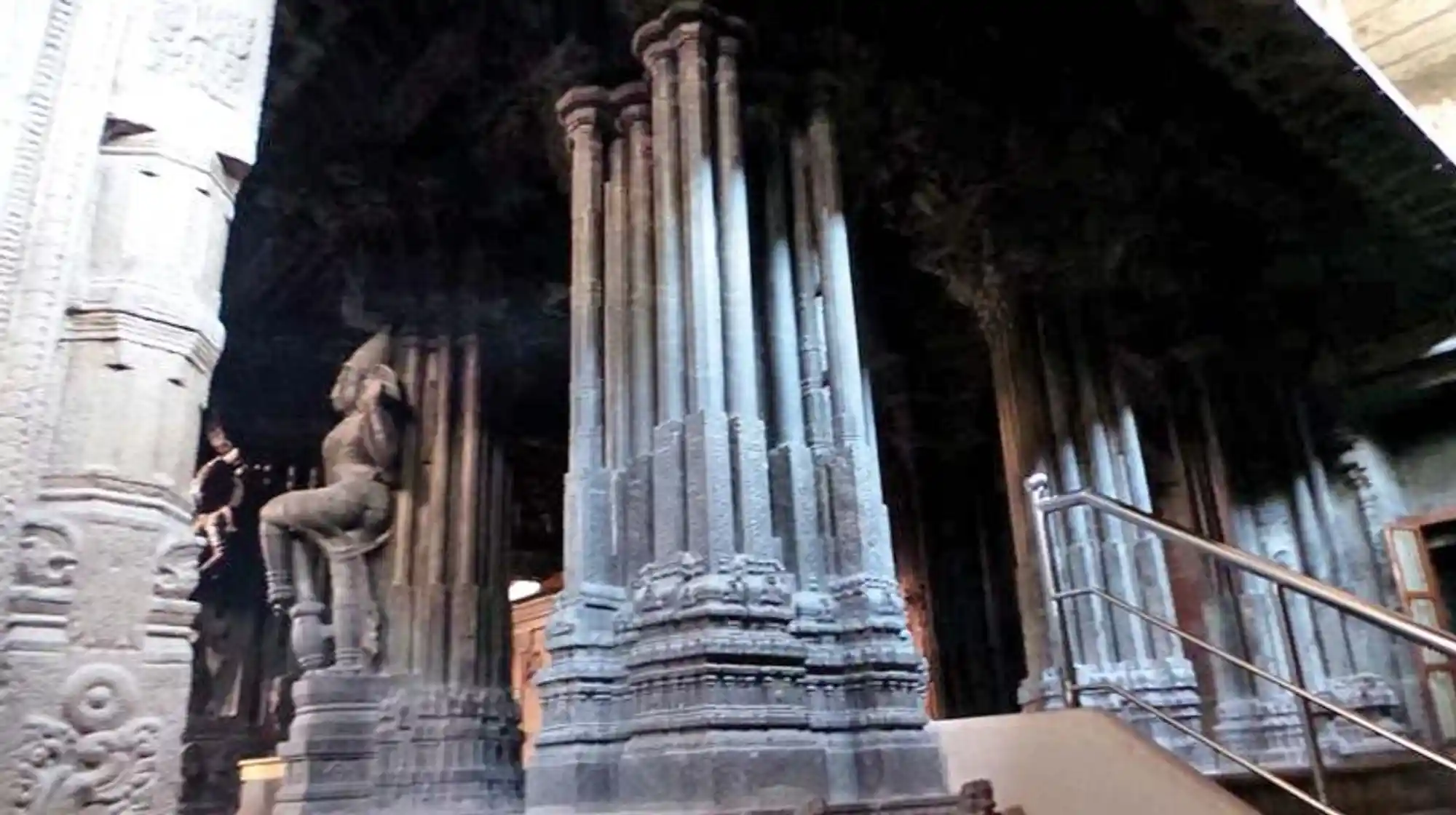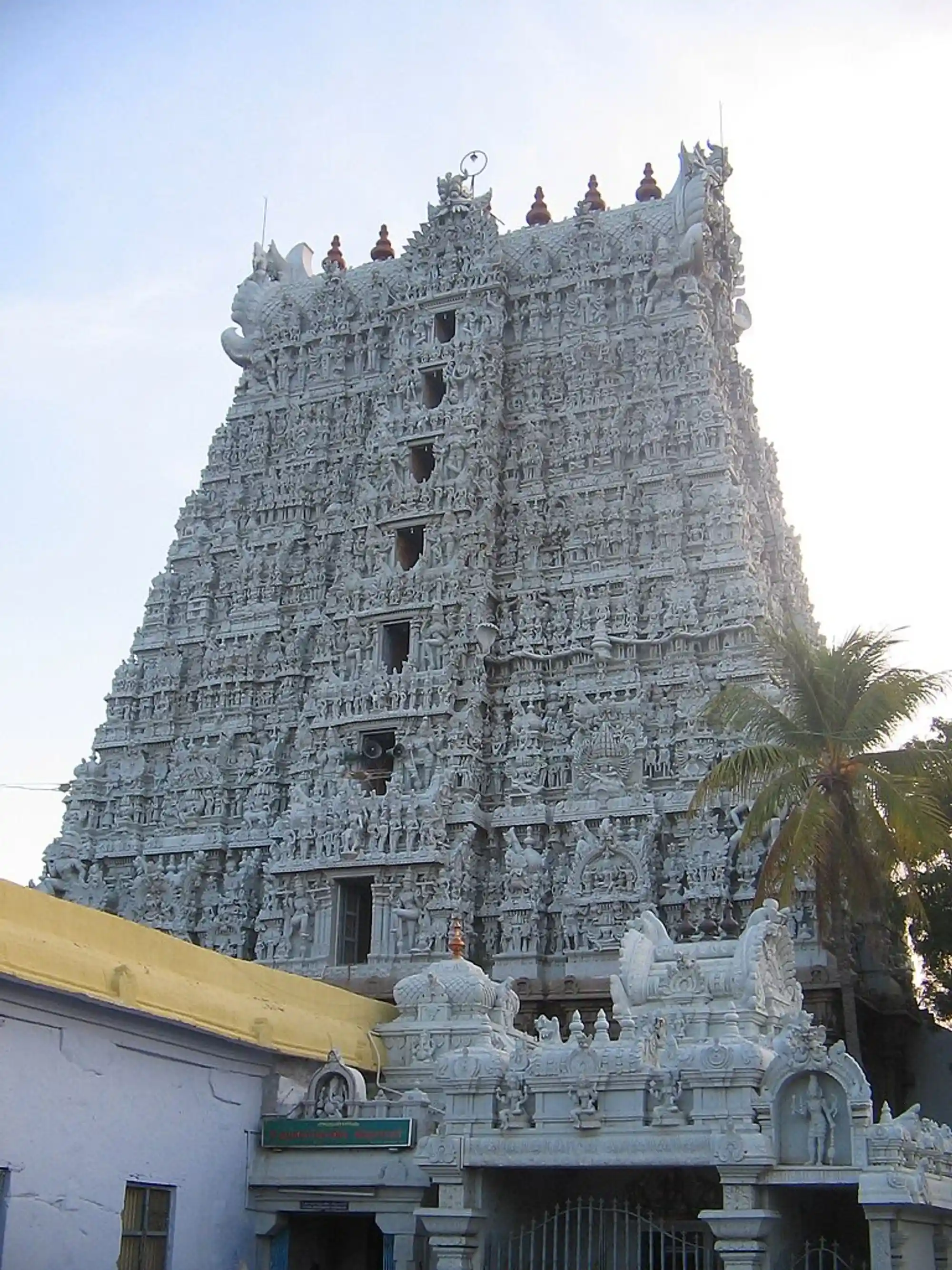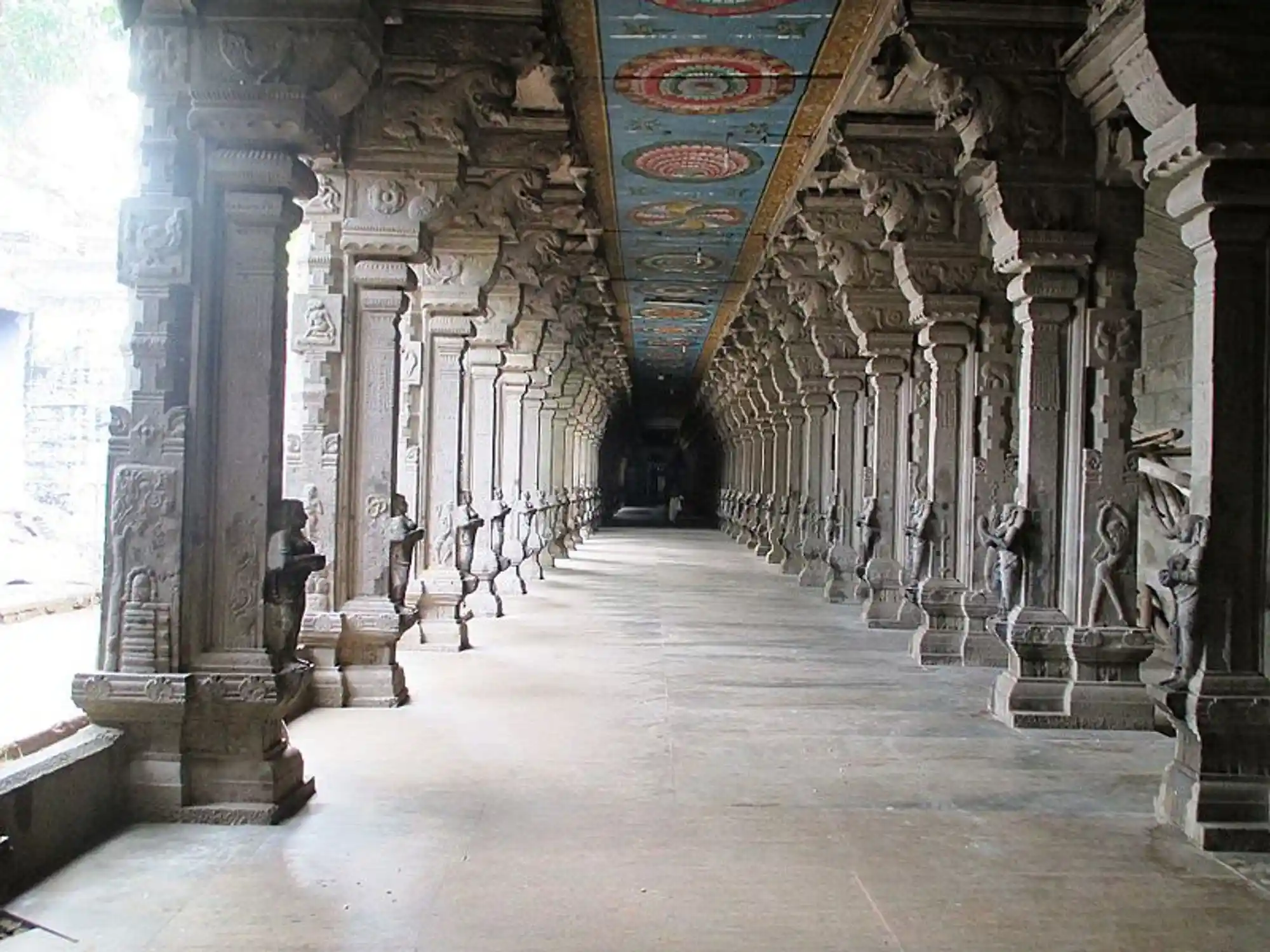Thanumalayan: The Temple of the Trideva
The Thanumalayan Temple, alternatively known as the Sthanumalayan Temple, stands as an ancient marvel nestled in the town of Suchindram within the Indian state of Tamil Nadu. This exceptional and singular temple venerates the Hindu trinity (trideva) comprising Shiva, Vishnu, and Brahma, earning renown for its distinctive architecture and historical eminence.

The entry to the temple I Source Wikipedia
The town of Suchindram, situated near the southernmost part of the Indian mainland in Tamil Nadu, harbours one of the 108 Shiva temples held in high esteem by Kerala's Hindu culture. Although not presently located within Kerala due to the merging of Kanyakumari District into Tamil Nadu from Travancore, the temple in focus is widely celebrated and referred to as the Thanumalayan or Sthanumalayan temple. This exceptional shrine deviates from the norm, as its principal deity is not singular but a fusion of the sacred trinity – Brahma, Vishnu, and Mahesh (Shiva) – symbolised by a single lingam. This imposing Lingam, enshrined in the garbhagriha, is divided into three sections: Shiva atop, Vishnu at the centre, and Brahma at the base. This amalgamation is also reflected in the temple's name, with "Stanu" representing Siva, "Mal" signifying Vishnu, and "Ayan" denoting Brahma. As a result, the temple holds significance for both the Shaivaite and Vaishnavite sects of Hinduism.
Constructed in the 9th century by the Chola dynasty, with subsequent expansions attributed to Thirumalai Nayak and the Travancore Maharajas, this temple exhibits a combination of Tamil and Keralan architectural styles, a rarity in the Travancore region. Within the two-acre temple complex stand two gopurams, each serving as an entrance. The eastern gopuram, soaring to 44 metres with 11 storeys, claims the title of the tallest. This seven-storey white gopuram showcases intricate sculptures depicting Hindu deities and mythological tales. Adjacent to the temple lies a vast temple tank, the water of which is deemed sacred and utilised in temple rituals.
The temple boasts several exquisite mandapams, including the Garuda Mandapam, Alankara Mandapam, Navagraha Manadapam, and Chempakaraman Mandapam. Notably, the Alankara Mandapam houses musical pillars that produce diverse musical notes when struck, exemplifying architectural brilliance. The temple's dance hall features an additional 1035 intricately carved pillars. The Navaratri Mandapam, constructed in the 16th century, showcases a characteristic timber design akin to Kerala temples. The Chempakaraman Mandapam, a pavilion showcasing art and architecture, is another attraction. The strikingly sculpted statue of Thirumalai Nayakkar within the Garuda Mandapam draws admiration. Noteworthy structures also encompass Thekkedam (housing a Lord Vishnu statue), Konnayadi (featuring three Swayambhu lingams beneath an ancient tree), and the sanctuary of Chitra Sabha.
Legend holds that Lord Indra, cursed by Rishi Gauthama for an illicit encounter with the sage's wife Ahalya, sought redemption in Gnanaranya by appeasing the trideva. It is believed that he came to Suchindram to cleanse himself of his transgressions, constructing a temple around a Lingam embodying the trideva – Brahma, Vishnu, and Shiva. Thus, the site was named "Suchindram," signifying the place where Lord Indra found purification. Another popular tale narrates the trideva's visit to the temple, where they encountered Devi Anusaya, the spouse of sage Atri. In a test of her virtue, they requested food in a condition that only unclothed individuals could offer it. Anusaya, obliged by her ethics, transformed them into babies and nursed them. Impressed by her conduct, the trideva appeared as Swayambhu Lingas beneath the Amaltas tree, now over 2500 years old, before departing for their divine abode.
Today, the Thanumalayan Temple stands as a popular tourist destination, enticing visitors worldwide with its unique architectural splendour, rich historical background, and profound spiritual significance. Its architectural magnificence sets it apart among Dravidian temples and exemplifies India's cultural heritage, underscoring the enduring impact of spirituality and tradition.
A shrine dedicated to Lord Vishnu inside the temple features an idol crafted from a blend of eight distinct metals. To the right, shrines honour Lord Rama and Lady Sita, while Lord Ganesha is situated on the left. The temple premises host around thirty shrines, including those dedicated to Kailasanathar, Nataka Sala, Kailasattu Mahadeva, Pancha Pandavar, Kontai Adi, Guru Dakshinamurthy, Lord Muruga, and others. Additional deities venerated here comprise Vigneswari (a female variation of Vinayaga), Lady Aram Valartha Nayaki, Indra Vinayaga, Kala Bhairava, and Sakshi Ganapathy.
An impressive 22-foot-tall statue of Lord Hanuman, sculpted from a single granite rock, stands as another marvel within the temple. Buried during the threat of an invasion by Tipu Sultan, this colossal statue was rediscovered in 1930 and reinstated to its former glory. A majestic lime and mortar sculpture of Nandi, Lord Shiva's chariot, measuring 13 feet in height, 21 feet in length, and 10 feet in breadth, captivates with its presence. Notably, the temple also features an intricately carved sculpture of Vinayaki (Female Vinayaka).

The musical pillars at the temple I Source: Deccan Chronicle

The towering white eastern Gopuram I Source: Wikimedia Commons

The tank near the Temple I Source: Wikimedia Commons

The pillars at the Temple I Source: Wikimedia Commons


